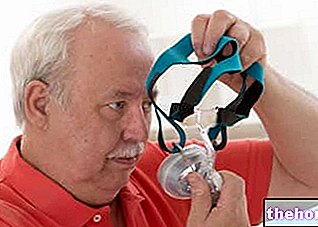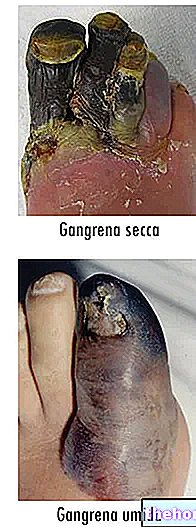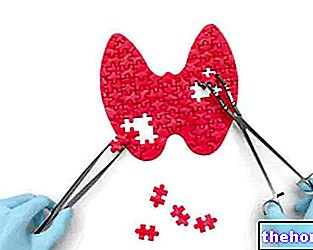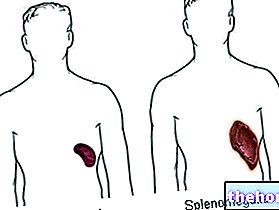Generality
In medicine, the English term compliance (acquiescence) indicates the degree to which the patient follows medical prescriptions, whether they are pharmacological or non-pharmacological (dietary, lifestyle, periodic monitoring examinations, etc.).

Good Compliance
Good compliance occurs when the patient puts into practice what is prescribed by the healthcare professional; eg:
- takes a given drug respecting the prescribed dosage;
- adopts the lifestyle changes suggested by the doctor (eg quitting smoking, abstention from alcohol and drugs, increased physical activity, etc.), avoiding behaviors at risk for their health;
- observe the doctor's prescribed diet;
- respect the appointments for the check-ups.
In these cases it is said that the Patient is compliant; specifically, to be considered as such, the patient must complete the prescribed therapy for at least 80%.
Bad Compliance
Poor compliance is synonymous with poor adherence to prescribed therapy; for example, the Patient - on purpose or involuntarily - changes the doses and times of taking the prescribed drugs.
Causes of Bad Compliance
The causes of poor compliance can be numerous.
First of all, poor adherence to treatments can be:
- unintentional (for example the Patient does not correctly understand the therapy or parts of it);
- intentional (the Patient consciously chooses not to follow medical therapy for the most disparate reasons, be they rational or irrational).
The main causes of bad compliance include:
- Age: compliance is lower in adolescence and in the elderly; in the child, it obviously depends on the parents. The elderly, for example, may unintentionally change the intake of a drug, forgetting medical prescriptions, forgetting the daily intake or confusing the packaging of medicines.
- Physical state linked to the disease: cognitive, visual and / or acoustic deficits decrease compliance;
- Psychic state linked to the disease: in depressed or highly stressed patients, compliance is lower;
- Type of therapy: for example, compliance for non-pharmacological prescriptions regarding lifestyle (eg correct diet, quitting smoking, etc.) is low;
- Pharmaceutical form: in general, drugs that require a lower frequency of administration result in better compliance, and vice versa; compliance, for example, tends to be higher if the skin application of a cream product 3 times a day is replaced by the application of the same product through patches to be changed once a day;
- Complexity of therapeutic schemes: the need to take more drugs and / or to take them at different times of the day significantly reduces adherence to prescriptions;
- Difficulty in reaching care facilities and follow-up visits;
- High cost and difficulty in procuring drugs: the greater the economic difficulties and the greater the difficulty of physically obtaining the drugs, the lower the compliance
- Duration of treatment: compliance tends to be high for short treatments and much lower for chronic ones;
- Non-acceptance of the disease: the patient could reject the idea of being ill, for example because the symptoms and disorders of the disease have not yet manifested or because this has not yet arisen (preventive therapy in individuals at risk).
- Chronic diseases: the patient's awareness that he will not be able to recover from a disease, but at the most control the symptoms, can trigger a desire to abandon the prescribed treatment or to seek an alternative solution, perhaps naively relying on "hearsay".
- Phases of remission and asymptomatic diseases: when a chronic disease remains asymptomatic for a long time, the patient could refuse the idea of resorting to therapy in the phases in which the symptoms are absent, or convince himself of being cured.
- Fear of the side effects of drugs: especially in cases where the patient interprets the prescribed therapy as unnecessary (see previous cases); for example, in the management of a chronic disease, pharmacological intervention could create disorders that were not present before;
- Unfavorable social environment: the support of the family and social support networks is useful for improving compliance;
- Bad doctor-patient relationship: compliance, in its classic definition, implies a "passive acceptance, by the patient, of what the doctor prescribes. However, most patients want to actively participate in the definition of the therapeutic path, discussing with the doctor the effects of therapy, alternatives, past experiences etc; consequently, to improve compliance the doctor should argue his choices in understandable language, responding to the Patient's doubts and requests, involving him in the management of the disease and creating expectations realistic on the therapeutic effects that can be obtained and on the timing necessary to achieve these results.
- Lack of confidence in the treating physician, which leads to the so-called "medical nomadism", that is, the search from time to time for a new doctor who can prescribe a better therapy.
How to Improve Compliance
Better compliance is achieved by intervening on the causes that can lead to bad compliance.
As far as the doctor-patient relationship is concerned, as anticipated, it is very important to pass from a patient's passive relationship to a collaborative relationship in which he feels fully involved in the treatment program.
During the preliminary visits, it is therefore important that:
- the doctor provides information on the disease and on the prescribed therapy, involving the patient and verifying their correct understanding; for this purpose it is useful:
- Provide information that inspires confidence;
- Use simple language;
- Limit the instructions to 3-4 main points;
- Integrate verbal information with written material;
- Reinforce the concepts discussed by repeating them.
- the Patient is encouraged to express his questions and concerns, in order to discuss them together;
- the purposes, priorities and methods of treatment are clarified, also with the aid of paper documents (eg brochures) and / or digital documents that help the Patient to remember them (according to some statistics, most Patients forget what the doctor already said the moment he left the clinic; moreover, about half of what the patients remember is remembered incorrectly)
- possible obstacles that can reduce adherence to therapy are identified and discussed, and useful strategies to prevent such difficulties
- if necessary, the family is also involved, making them aware of the disease and other aspects related to the prescribed therapy.
This relationship will then be cultivated over time, on the occasion of subsequent checks (follow-up of the therapy):
- the patient should be encouraged to express his opinion on the therapy followed, underlining any reasons for dissatisfaction or concern and reporting the frequency and extent of any deviations from what is prescribed;
- the importance of the treatment and its usefulness be reiterated (for example, remembering that the inconvenience and difficulties in joining are less than the benefit that is derived from it);
- strategies are established where possible to reduce these difficulties.
Positive evolution of the Term
Compliance: implies a concept of passivity of the patient, who must comply with the doctor's prescriptions (decision asymmetry) → Adherence: term preferred today to the previous one, as it emphasizes the active role of the patient and his participation in the treatment → Concordance: still little used, it emphasizes the therapeutic alliance that should be created between doctor and patient, the result of a negotiation process, with full respect for the needs of both.




























